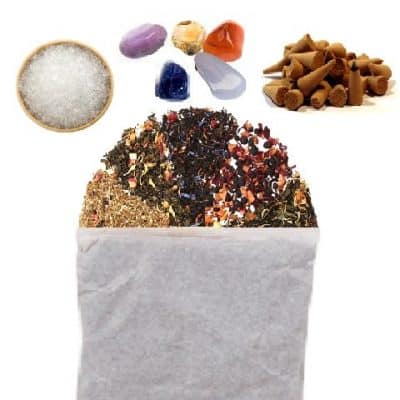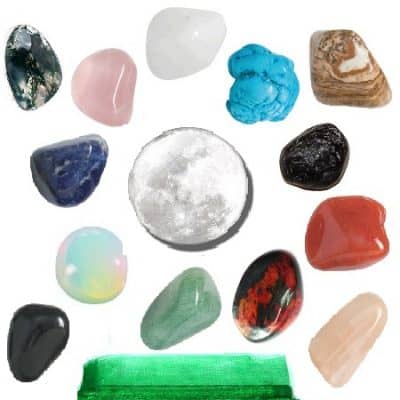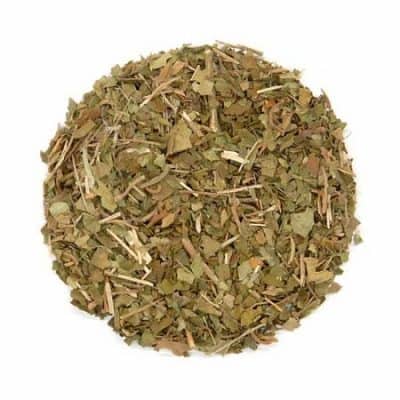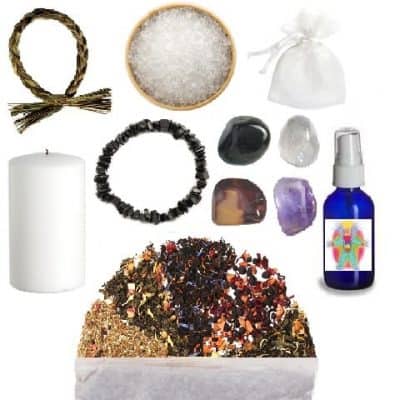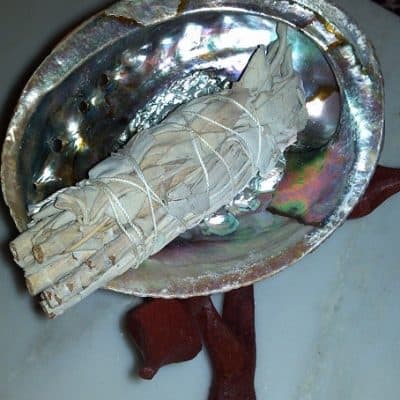Imbolc
An Irish Gaelic word, Imbolc pronounced im-molk, literally means “in milk” or “in the belly“. It is a time for honoring creativity, fertility and receptive, feminine energy. It occurs when daylight begins to lengthen as we approach the Spring Equinox.
It is apart of the Wheel of Life where ancient connections mix Irish spirituality with Celtic pagan traditions and Christianity. It is also a time we celebrate love and patience.
Celebrated all over the world in different cultures including Imbolgc Brigantia (Caledonni), Imbolic (Celtic), Disting (Teutonic, Feb 14th), Lupercus (Strega), St. Bridget’s Day (Christian), Candlemas, Candlelaria (Mexican), the Snowdrop Festival, The Festival of Lights or the Feast of the Virgin.
When: February 1st or 2nd
Season: Cross Quarter : (Mid-way point between Winter and Spring)
Represents: Festival of the Maiden, St. Brigid’s Day, Candlemas, Groundhog’s Day, Weather Divination
Virtues: Fertility, Patience
Symbols: Candle, Ewe Lamb, Crocus Flowers, Corn Doll, St. Brigid’s Cross, Priapic (acorn-tipped) Wands, Bride’s (baskets) Beds, Seeds
Gemstone: Amethyst, Aventurine, Fire Agate, Bloodstone, Carnelian, Citrine, Rose Quartz, Snow White Quartz
Color: Red, Green, White, Yellow, Brown
Essential Oils: Basil, Cedar, Geranium, Myrrh, Pine, Rose, Rosemary Vetiver
Remedies: Angelica, Basil, Dandelion Root, Dill Weed, Rosemary, White Willow Bark, Yellow Dock
Flowers: Ancyrensis, Chrysanthus, Crocus, Sieberi, Tommasinianus, Yalta
Element: Water
Direction: Northeast
Life Event: Quickening
Lunar: Ice Moon or Full Snow Moon
Body Healing: Strength
Mind Healing: Intuition
Spirit Healing: Sacred Spirit
Imbolc Meditation: Protection
Imbolc Connections: Resin Incense, Celtic Candles, Essential Oil Blends, Celtic Amulets, Celtic Crystals, Celtic Astrology
Featured Imbolc Gifts
-
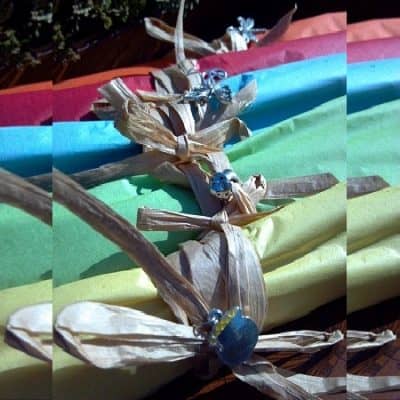
“Celtic Offerings” Incense
$ 11.95 -

“Wheel of the Year” Resin Incense
$ 4.95 -

Brigid’s Cross Pendant
$ 21.95 -

Corn Dollies
$ 12.95 -

Cupid Spell Candle
$ 21.95 -
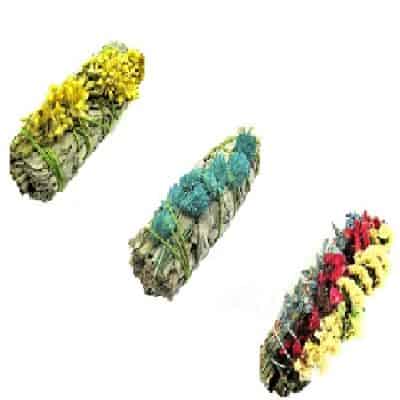
Floral Sage Pack
$ 19.95 -

Flower Power Incense Cones
$ 5.95 -

Four Seasons Casting Herbs
$ 8.95 -

Full Moon Candle
$ 14.95 -
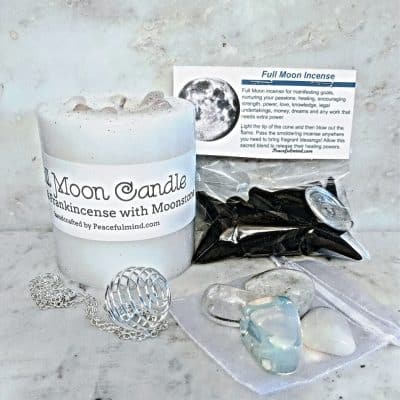
Full Moon Ritual Kit
$ 29.95 -

Goddess Crystal Candle
$ 17.95 -
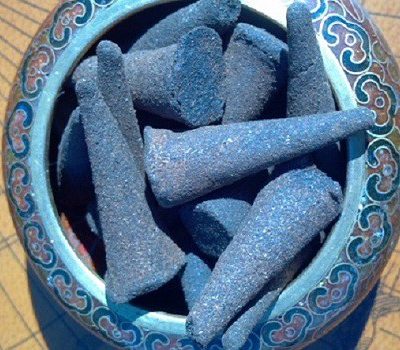
Hawaiian Plumeria Cone Incense
$ 5.95 -

Imbolc Candlemas Set
$ 39.95 -

Imbolc Crystal Pouch
$ 14.95 -

Imbolc Elixir Oil
$ 9.95 -

Imbolc Gift Set
$ 49.95 -
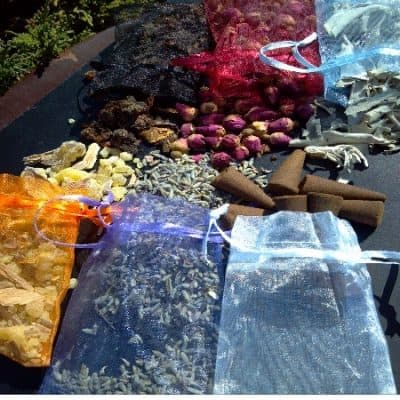
Incense Herbal Sampler
$ 11.95 -

India’s Sweetest Flower Incense
$ 5.95 -

Law of Attraction Perfume
$ 24.00 -

Love Stone Collection
$ 21.95 -

Magic Fairy Garden Candle
$ 24.95 -

New Moon Beginnings Perfume
$ 28.00 -

New Moon Candle
$ 14.95 -

New Moon Ritual Kit
$ 29.95 -

New Moon/Full Moon Candle Set
$ 27.95 -

Nine Sacred Woods Candle
$ 21.95 -
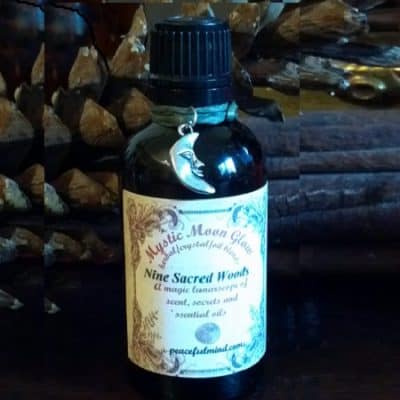
Nine Sacred Woods Elixir Oil
$ 9.95 -

Opium Incense Cones
$ 4.95 -

Palo Santo Chips
$ 6.95 -

Palo Santo Incense
$ 12.95 -
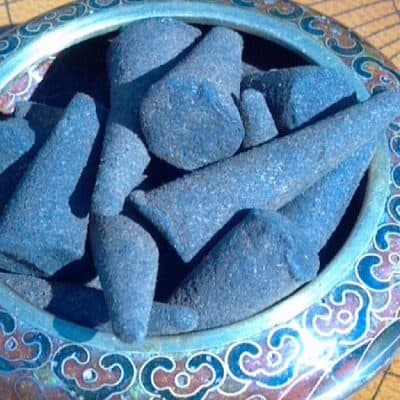
Palo Santo Incense Cones
$ 6.95 -

Palo Santo Powder Incense
$ 6.95 -
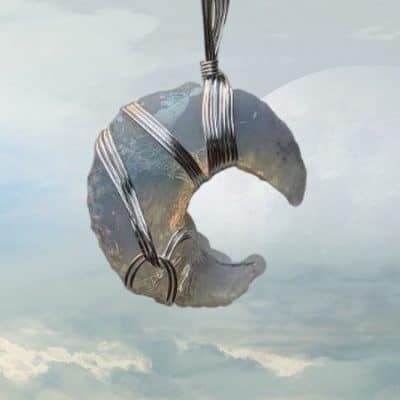
Rainbow Opal Moon Pendant
$ 38.00 -
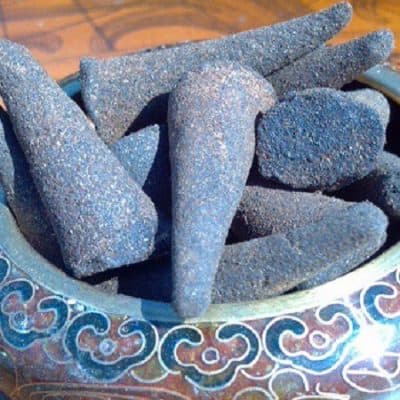
Reiki Spirit Incense Cones
$ 5.95 -

Sacred Rue Candle
$ 17.77 -

Sage Clearing Spray
$ 14.95 -

Sage with Dragons Blood
$ 6.95 -

Sensual Goddess Bath, Body Perfume Oil
$ 24.00 -

Special-Teas by the Pound
$ 30.00 -

Sugar & Spice Gift Basket
$ 34.95 -

Transforming Recovery Pendant
$ 34.95 -
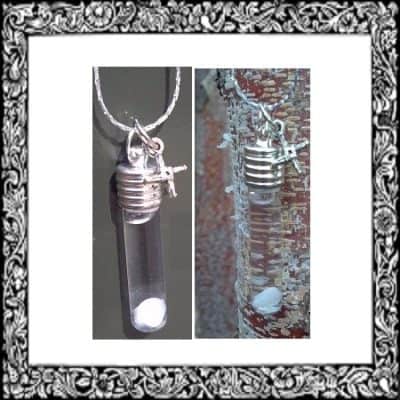
Well Water of St. Brigid
$ 34.95

St. Brigid
St. Brigid was born in A.D. 451 or 452 to a pagan father (Dubthach) and Christian slave mother (Broicsech) just after the time that St. Patrick was preaching. It is said a Bishop met the pregnant slave mother and predicted that the child she was carrying would do great things. It is said, too, that a Druid of Dubthach’s household had predicted that there would soon be born one who “shall be called from her great virtues, the truly pious Brigid”.
St. Brigid is the patroness of dairy maids, infants, midwives, blacksmiths, poets, nuns, and students. Along with St. Patrick, she is the patroness of Ireland. St. Brigid is depicted in art as a nun with a Cross woven from rushes, with a crozier, with fire (a candle, lamp, or bowl of fire), and/or with a cow.
Kildare’s historic plains covers almost 5,000 acres and are known as St. Brigid’s pastures. In the year 470, Brigid founded an abbey at Kildare and was Abbess of the convent, the first in Ireland. The foundation developed into a center of learning and spirituality. She is legendary, extravagant and many miracles are attributed to her.
In Irish mythology Brigid was the Celtic goddess of fire, poetry, unity, childbirth and healing. She was the daughter of Dagda a High King of the Tua Dé Danann. Sacred wells were always places of pilgrimage to the Celts. They would dip a clootie (piece of rag) in the well, wash their wound and then tie the clootie to a tree. generally a Whitethorn or Ash tree, as an offering to the spirit of the well. It seems only natural that these traditions would be carried forward into modern times in the form of Saint Brigid. Today’s pilgrimages to holy wells usually take place on the Saints feast day or Pattern or Patron days.
The Well of St. Brigid is fed by a spring that then flows underground before appearing again under a stone archway. The stones below the archway are known as St Brigid’s slippers. The stream then flows passed a modern bronze statue of Saint Brigid.
Snow white quartz symbolizing the Nine White Stones, which represented the nine virgins attending Brigid. They were priestesses of the Goddess, then later nuns tending the eternal flame at Kildare.
Imbolc (February 1st or 2nd) is also known as St. Brigid’s Feast Day and in the Catholic holidays as Candlemas. Candlemas is a Christian holiday celebrated annually on February 2. It celebrates three occasions according to Christian belief: the presentation of the child Jesus, Jesus first entry into the temple and celebration of the Virgin Mary’s purification. Imbolic is a Gaelic festival marking the beginning of Spring. Most commonly it is held on 31 January – 2 February, or halfway between the winter solstice and the spring equinox.
See also: St. Brigid’s Cross, Snow White Quartz, Imbolc

St. Brigid’s Cross
St. Brigid is the patroness of dairy maids, infants, midwives, blacksmiths, poets, nuns, and students. Along with St. Patrick, she is the patroness of Ireland.
St. Brigid’s Cross has long been a symbol associated with the Irish goddess, Brighid, who presides over home and hearth.
The girl who was later adopted into the Christian faith as St. Bridget was said to have woven this cross in order to help a dying pagan solider convert to Christianity.
Other legends suggest the cross is actually a wheel of fire. In parts of Ireland, Brighid is known as the triple goddess of the crossroads,representing heaven, earth and otherworld or the place where three worlds meet, and the year is at a crossroads between light and dark. She is also known as having two other sisters named Brigid and was an expert in poetry, divination and prophecy.
Although predating Christianity, this cross was given the name of St. Brigid Cross. Together these four arms of the cross represent the cardinal directions and the four elements or four major holidays in the Wheel of the Year.

St. Brigid’S Well Water
The Holy Well of St. Brigid is in Kildare, Ireland. This well and gardens are dedicated to the Goddess and now Saint Brigid, an expert in poetry, divination and smith’s craft. She is celebrated on the Celtic holiday of Imbolc.
Holy wells throughout the Celtic world are dedicated to different goddesses and saints, many of whose waters are thought to be curative of various ailments. Around the Holy wells you will often see votive offerings like prayer beads, charms, tokens, ribbons and food to honor and offer prayers, devotion and intercessions, all relayed by the millions of pilgrimages whom visit these sacred place. These Holy wells offer life giving hope, renewed healing properties and a spiritual connection to our deities and nature.
Kildare’s historic plains covers almost 5,000 acres and are known as St. Brigid’s Pastures. In the year 470, Brigid founded an abbey at Kildare and was Abbess of the convent, the first in Ireland. The foundation developed into a center of learning and spirituality. She is legendary, extravagant and many miracles are attributed to her.
An Irish Gaelic word, Imbolc pronounced im-molk, literally means “in milk” or “in the belly”. It is a time for honoring creativity, fertility and receptive, feminine energy. It occurs when daylight begins to lengthen as we approach the Spring Equinox. It is apart of the Wheel of Life where ancient connections mix Irish spirituality with Celtic pagan traditions and Christianity. It is also a time we celebrate love and patience. Celebrated all over the world in different cultures.
Sacred wells were always places of pilgrimage to the Celts. They would dip a clootie (piece of rag) in the well, wash their wound and then tie the clootie to a tree. generally a Whitethorn or Ash tree, as an offering to the spirit of the well. It seems only natural that these traditions would be carried forward into modern times in the form of Saint Brigid. Today’s pilgrimages to holy wells usually take place on the Saints feast day or Pattern or Patron days.
Although now a small well -maintained park, the site still has an aura of ancient energy, a very spiritual place. The well is fed by a spring that then flows underground before appearing again under a stone archway. The stones below the archway are known as St Brigid’s slippers. The stream then flows passed a modern bronze statue of St. Brigid.

Corn Dollies
From the Native Indian to the Celtic culture, the corn doll or dolly is associated with the “spirit of the harvest”. Corn dolls, poppets or corn dollies was often made at the end of harvest, Mabon or Autumn Equinox in order to “capture the spirit of the crops”.
They were brought in doors for the winter. These blessing dolls are often placed on your altar or sacred space, hung in the kitchen or over the inside of the front door. They are used to protect the “harvest spirit”. On farms they were taken back outside and plowed back into the ground at the start of the next season. The dollies were often made into the “old crone” representing the aspects of the Harvest Goddess.
In Scotland, it was customary for young girls to make a corn dolly during Imbolc, the mid-way point between Winter and Spring, and place it in a Bride’s Bed. This was a basket dressed up with reeds, ribbons or lace and a blanket in the bottom to place the doll on. The doll and basket would be taken from house to house as a blessing from St. Brigid.
Decorate her as a bride of Spring for fertility and abundance (St Brigid). Place your Brigid doll in a place of honor in your home for Imbolc, near your hearth or in the kitchen or basket (Brigid’s Bed).

2nd Celtic Moon
(Jan 22 – Feb 18) (The Thinker) The Rowan Moon is associated with Brighid, the Celtic goddess of hearth and home. Honored on February 1, at Imbolc, Brighid is a fire goddess who offers protection to mothers and families, as well as watching over the hearth fires. This is a good time of year to perform initiations (or, if you’re not part of a group, do a self-dedication). Known by the Celts as Luis (pronounced loush), the Rowan is associated with astral travel, personal power, and success. A charm carved into a bit of a Rowan twig will protect the wearer from harm. The Norsemen were known to have used Rowan branches as rune staves of protection. In some countries, Rowan is planted in graveyards to prevent the dead from lingering around too long.

Water
This receptive energy symbolizing our emotions, water is an important part of this holiday.
Psychologically, water represents a good memory. This can manifest as dwelling on the past. But the ultimate experience of water is remembering that we all share life as a common heritage.
Within the Celtic history, water ~ including lakes, streams, rivers, springs and wells, have been held in deep respect, honor and places to visit on pilgrimage. The power of water has refreshing, hydrating and rejuvenating powers that call, the Celts (and most every other culture) to their healing banks and shallows to gather, drink and bathe in the ever sacred waters! Water is considered a fertility symbol, found in the Culdron of Daghda, in the Baths and Sanctuaries of Sulus, on the shoreline of the Boyne River and flowing along Brigid’s Well.

Candles
Candlemas is a church “adaptation” of the Imbolc holiday, celebrating the goddess, called Imbolc where people light candles to banish dark spirits, dark nights and look forward to the light of Spring.
Candlemas is celebrated on the same day as Imbolc, February 2nd. The word Imbolc, variously spelled Imbolg, Oimelc and Imelg, also means “ewe-milk” because this is the time baby lambs were born in old England, Ireland and most of Europe therefore, bringing back the flow of ewe’s milk.
The Christian version is called the Purification of the Virgin and is the end/culmination of the forty day period after Mary gave birth to Jesus on December 25. Women had to wait forty days after childbirth before entering a church or temple again due to their “uncleanliness”. This waiting period is still observed in Eastern Orthodox Christian churches today, and all Christian churches

Winter Ritual Bath
Try this bath:
~Blend together in a blender 3 cups of whole milk, 2 teaspoons of honey and 1 sprig of dried sage
~ Light 5 white candles to represent the power of fire and light. They embody the winter white snow
~ If you would like to encircle your bath tub with crystals, consider placing 4 crystals in 4 corners (rose quartz, chiastolite, moonstone and aventurine, and add milky white quartz stone into the bath water.
Run the bath water into the tub and add your blended mixture of milk, honey and sage into the running water. You can repeat a prayer or positive affirmation as you sit in the water,
Relax in your bath for 15 – 20 minutes. Think positive, creative and fertile thoughts as you enjoy this ritual to cleanse, purify and love yourself for the turn of a new Spring to come.
Imbolc Blessing
O Brigid our most patron saint,
of craft and poem and home so quaint.
From cross you wove with field rush,
to dollies made with care and such.
You bless our home, our brides, our land,
with mother Nature close at hand.
We honor up these charms so dear,
to bring good joy, when Spring is near
~ Andrew Pacholyk MS L.Ac


